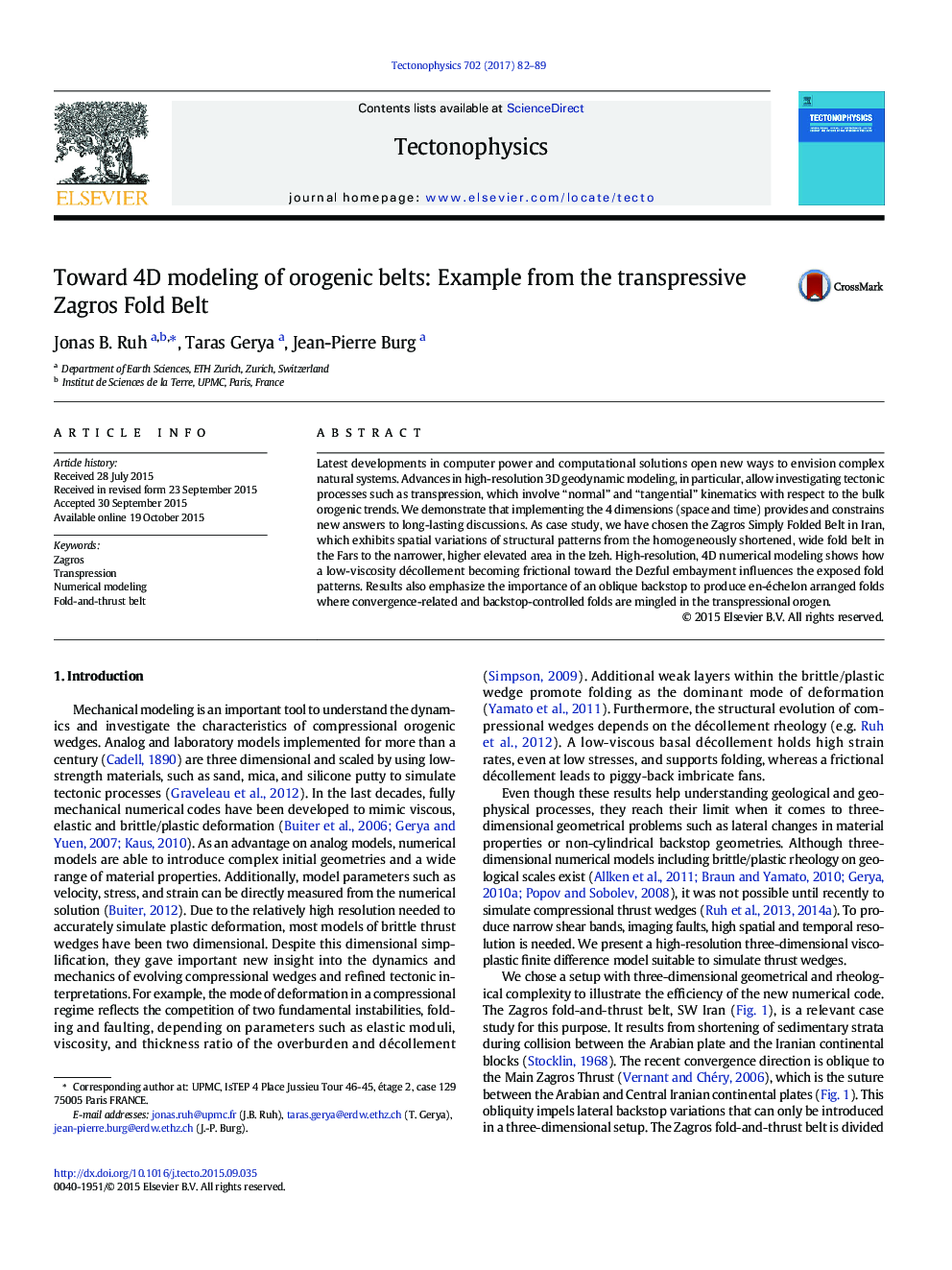| Article ID | Journal | Published Year | Pages | File Type |
|---|---|---|---|---|
| 5781659 | Tectonophysics | 2017 | 8 Pages |
Abstract
Latest developments in computer power and computational solutions open new ways to envision complex natural systems. Advances in high-resolution 3D geodynamic modeling, in particular, allow investigating tectonic processes such as transpression, which involve “normal” and “tangential” kinematics with respect to the bulk orogenic trends. We demonstrate that implementing the 4 dimensions (space and time) provides and constrains new answers to long-lasting discussions. As case study, we have chosen the Zagros Simply Folded Belt in Iran, which exhibits spatial variations of structural patterns from the homogeneously shortened, wide fold belt in the Fars to the narrower, higher elevated area in the Izeh. High-resolution, 4D numerical modeling shows how a low-viscosity décollement becoming frictional toward the Dezful embayment influences the exposed fold patterns. Results also emphasize the importance of an oblique backstop to produce en-échelon arranged folds where convergence-related and backstop-controlled folds are mingled in the transpressional orogen.
Related Topics
Physical Sciences and Engineering
Earth and Planetary Sciences
Earth-Surface Processes
Authors
Jonas B. Ruh, Taras Gerya, Jean-Pierre Burg,
